Alex Knott Equine Veterinary Services is an independent veterinary practice dedicated to the performance and wellbeing of the equine athlete. Having worked in equine practice for over 20 years, Dr Alex Knott has developed a focus on lameness investigations, ultrasonography, radiography, endoscopy, and pre-purchase exams for equine athletes. The evolution of mobile diagnostic equipment has enabled him to offer hospital-level diagnostics on the yard with a battery-operated DR radiography system. VET.CT met with Alex to discuss how he applies the principles of radiation safety for himself, his clients and his patients on the yard.
General considerations
“Whenever I consider imaging on the yard I always have three key principles in mind:
1) Are my equipment and practices compliant with radiation safety legislation?
2) How can I limit radiation exposure while still obtaining high quality diagnostic images?
3) How can I optimise safety for the horse, handler and myself?
“I have invested in a high quality digital radiography (DR) machine and make sure it’s serviced annually and checked regularly to ensure it’s in good working order and look for any signs of damage. I also have plate holders, lead gloves and gowns, and make sure I gain signed consent for handlers and assistants - anyone within the radiation zone during exposures - prior to taking X-rays. This consent form includes acknowledgement of the risks of ionising radiation, and confirmation that they’re over 18 and not pregnant. Much of this is to ensure I’m legally compliant with ionising safety regulations of course.”
Patient Selection
“As a sole practitioner, all responsibility for radiation safety lies with me alone and I take this responsibility seriously as part of my professional duty. Before I even reach for the X-ray machine, I consider what I am hoping to achieve by taking the images, and how the findings will affect patient management and outcome. As I’m on the road I have to take a pragmatic approach and narrow down to a likely diagnosis before considering what images I might need to take. For example, in an older, heavier horse I’m likely to see changes in multiple joints that may not be clinically relevant. What is the clinical presentation and what do I need to consider to ensure the patient is treated correctly?
“Typically, this involves thorough clinical examination and lameness workup to localise the area of interest. I also consider the most likely differentials given the signalment of the horse, the type of work and the clinical history (onset, duration, pre-existing conditions). “Then I think about what each view and projection will tell me - what I am expecting to find and what I need to rule in or out, and how the images will help me to determine this? This all helps me to limit the number of plates rather than doing survey X-rays. Also, in some cases, alternative imaging modalities (ultrasound, CT or MRI) may be more appropriate.”
When to consider sedation
“Sedation helps to ensure convenience and safety while imaging. I tend not to need sedation for a quiet horse that is happy to stand on a block for foot X-rays. However, if I’m imaging higher up the body - the stifle, back or neck – higher exposures are needed, it’s more important to avoid movement, and the horses often don’t like having the plates near the body. For these reasons, I tend to sedate these cases to reduce stress for the horse, reduce the risk of movement, and limit the likelihood of having to repeat exposures.“
Setting up a radiation zone
“Most of the yards I work on with performance horses are familiar with having X-rays taken on site, but it’s always a good idea to check in advance that there will be a quiet, indoor area to use. Ideally you want somewhere sheltered with low through-traffic - I prefer an end stable with side walls. I put up signage to indicate the radiation safety area and ensure there is no one standing behind walls or leaning over the stable door - people often think these give sufficient protection, which is where the signage can be really helpful. “I restrict the number of people within the zone to the horse handler, assistant and myself. We all wear lead aprons with a dosimeter underneath. I submit the readings regularly - the UK Radiation Protection Services handily send reminders and I can upload them directly from home. I’ve never had a significant reading. “The plate handler also has lead gloves. I have plate holders to distance the handler from the plate, though it can be challenging to hold plates static at arm’s length, so I try to be quick. I use a stand for the X-ray machine whenever possible, though it’s also a balance to consider safety around the horse.”
Read the full Alex Knott Equine Veterinary Services radiation safety case study using the button below.
VET.CT Champions Radiation Safety through Global Campaign
VET.CT has launched a campaign to raise awareness about the importance of radiation safety in veterinary practice, providing a comprehensive suite of free resources and real-life case studies to support veterinary teams.
Read morePennard Vets Radiation Safety Case Study
How do real-life practices keep their teams and patients safe during diagnostic imaging? VET.CT sat down with leading clinics to uncover practical, everyday tips that make radiation safety simple and effective.
Read moreQueensland Veterinary Specialists Radiation Safety Case Study
How do real-life practices keep their teams and patients safe during diagnostic imaging? VET.CT sat down with leading clinics to uncover practical, everyday tips that make radiation safety simple and effective.
Read more
